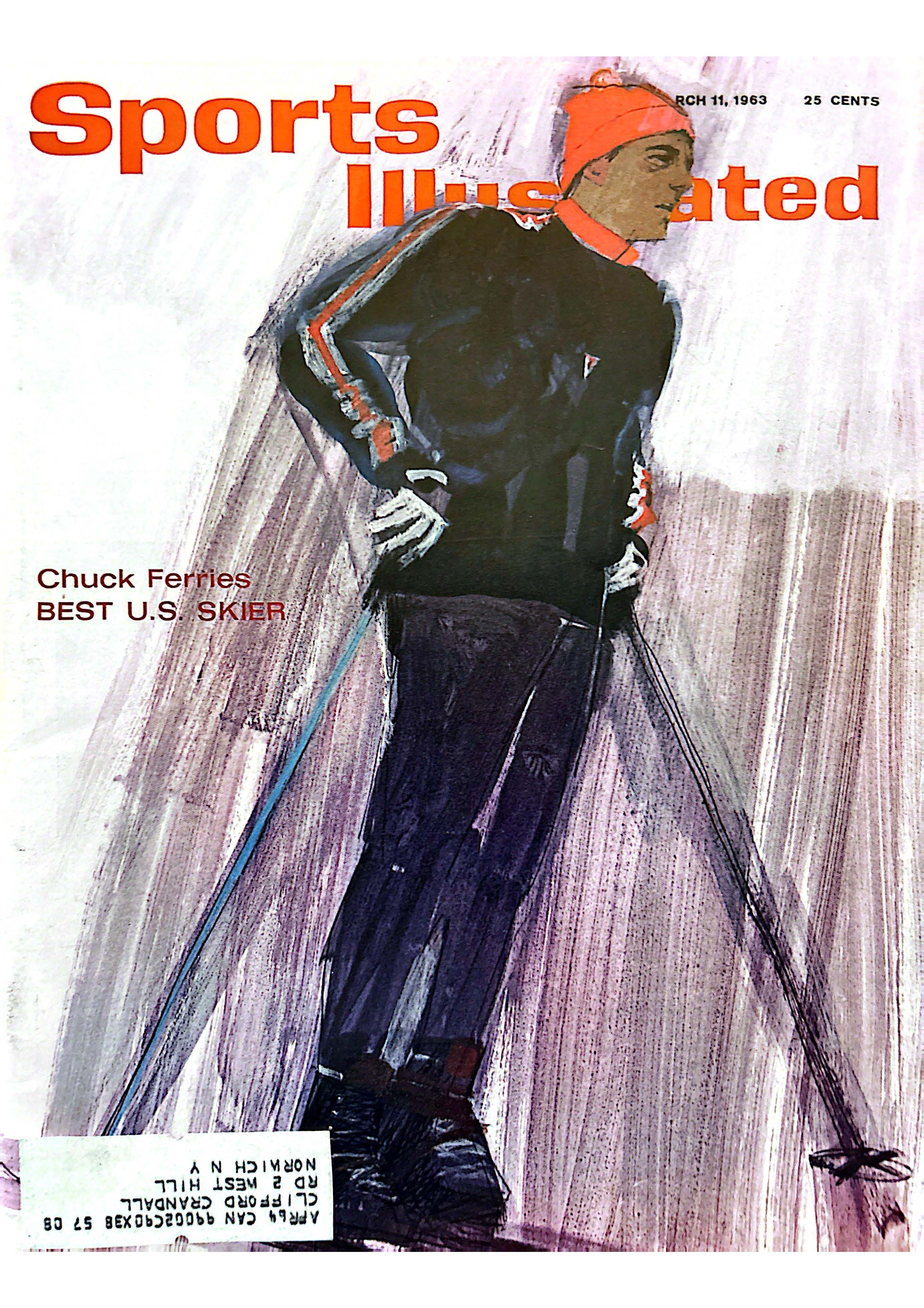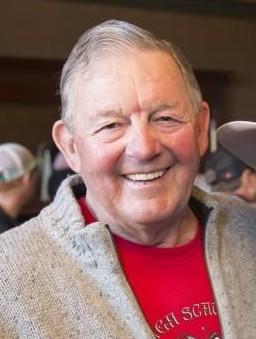Chuck Ferries - Slalom champ, coach, executive
Charles Thompson “Chuck” Ferries III passed away April 17 in Ketchum, Idaho, at age 85. He had been struggling with dementia for about three years.
Ferries grew up in Houghton, on Michigan’s Upper Peninsula, and learned to ski on the 440-foot Mt. Ripley, operated by Michigan Tech University. At age 7, Ferries and his three siblings were taken under the wing of MTU ski coach Fred Lonsdorf; the family formed the core of a junior ski team which later became a high school squad. Ferries won his first slalom at age 10 and continued to run courses with the MTU team on Ripley’s icy snow, improving as the years went on.
Ferries’ goal was to become the best skier in the country. In 1953, at age 14, he had a top-ten finish at the Junior Nationals in Jackson, Wyoming. In the autumn of 1955 he climbed out his bedroom window and caught a train to Sun Valley. Finding no snow, he went to Alta, Utah, where he washed dishes while learning to ski powder with Alf Engen. He broke an ankle early in the season and went home to Houghton.
The following autumn, Ferries traveled to Aspen, moved into a dormitory and enrolled at Aspen High School. That spring, at 17, he finished fourth in the Roch Cup slalom behind Toni Sailer, Christian Pravda, and Tom Corcoran.
The tall, spindly kid was on his way. Willy Schaeffler brought him to the University of Denver, where he studied business. He missed the World Championship team for 1958 but with the best Americans in Europe that season, won the Roch Cup GS and downhill—and the national championship slalom in Alyeska.

In January, 1961 he beat Buddy Werner in Alta’s Snow Cup slalom, then won the Roch Cup slalom by six seconds. In 1962 he won the Hahnenkamm slalom, beating Guy Perillat by .7 second. He was the first and last American man to win that race to date. He won the slalom at Cortina d’Ampezzo. Meanwhile his sister Barbara won the downhill bronze at the Chamonix World Championships.
Between racing, training, and flying bush planes in Alaska, he continued his studies at the University of Denver. On March 11, 1963, leading up to the 1964 Olympics in Innsbruck Austria he was on the cover of Sports Illustrated magazine with title “Chuck Ferries - Best U .S. Skier.” In the 1964 Olympics, he fell in the slalom. Instead of going back to school, he accepted a job offer from Howard Head and moved to Seattle as a sales rep. In 1966 Bob Beattie asked him to coach the U.S. women’s team, and he did so through the 1968 Olympics. Then he joined Bill Kirschner at K2 to help develop the new factory’s first generation of race skis. He became VP of marketing and presided over K2’s brilliantly quirky ad campaigns of the freestyle era.
By 1976 Ferries wanted to live in the mountains again, and to raise his kids there. Moving to Sun Valley, he partnered with Clay Freeman and Bud Godfrey in Wintersports International, which sold U.S.-built ski equipment abroad.
By that era, K2 controlled about 25 percent of the U.S. ski market, and was butting up against a market-share ceiling. The company wanted to expand sales by launching a second brand. Ferries created that brand – Precision Skis, or PRE. While K2 owned the brand, Ferries took on marketing, distribution and sales. The new company achieved steady growth.
In 1981, with goggle inventor Bob Smith and Dr. Richard Sugden, Ferries bought Scott USA out of bankruptcy. They re-established Scott as the world’s best-selling ski pole brand. Between them, Smith and Scott controlled about 70 percent of the North American market for ski goggles.
In 1982 Ferries joined the U.S. Ski Team management group as chair of the board of trustees. In 1986 he launched a line of Scott USA mountain bikes, which proved especially successful in Europe. That year K2 reclaimed distribution of Pre skis, but in 1992, with Chicago investor Sam Zell, Ferries bought the floundering Schwinn bicycle company and moved it to Boulder, Colorado. Within two years, Schwinn was profitable again. In 1997 the partners sold it to Questor Corp., and in 1997 sold Scott to its European partners and Ferries retired.
In 2002 he came out of retirement and, with his son Tom and son-in-law Mike Neary and their partners, bought Chums, the Utah-based manufacturer of eyeglass retainers. Ferries commuted to Hurricane, Utah in his own plane. He skied about 40 days a year and spent six weeks each summer windsurfing at Hood River, Oregon with his wife Nancy. He stepped away from the business in 2018 and kept skiing until illness restricted his activities.
For a full biography, see Chuck Ferries: Rail Rider from the December 2009 issue.


Comments
Chuck Ferries
I worked at Head Ski as the New England rep in 1964. I found him to be smart, insightful, and hard driven. It was an honor and privilege to get to know him.
Peter Hawks